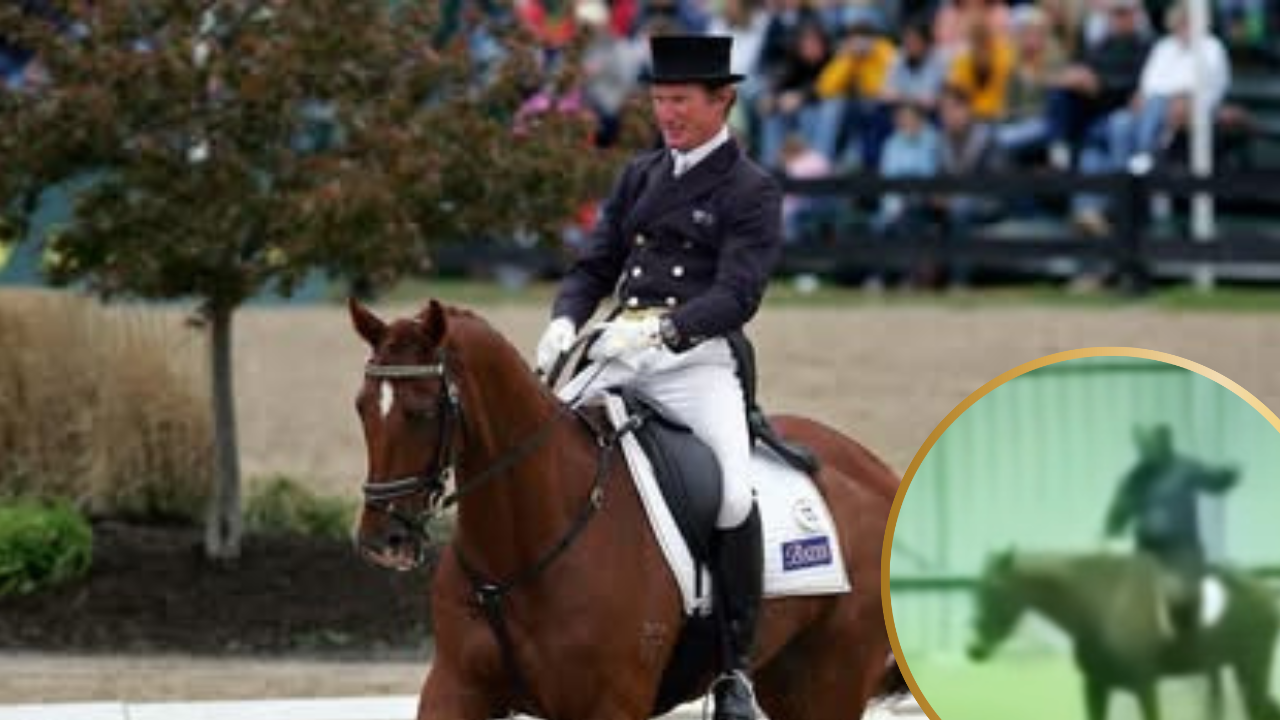In June 2025, a haunting video surfaced showing Australian Olympic dressage rider Heath Ryan relentlessly whipping a horse during a training session—more than 40 strikes in a matter of moments.
The footage, captured around 2023 in a Newcastle-based indoor arena, ignited fierce debates around horse welfare, training ethics, and the line between rescue and cruelty. This unfolding saga touches on sporting integrity, scientific consensus, and public outrage—forcing a reckoning within the equestrian world.
The Moment That Shook the Equestrian World

The footage, initially released by Dressage Hub on Facebook and YouTube, depicts a visibly distressed six-year-old stallion named Nico, responding to each strike with kicks and swishes of its tail.
Despite audible cracks and evident pain, the whipping continues—reaching around 40–42 blows in total. The raw video sparked immediate condemnation and led to swift action from governing bodies, setting the stage for a landmark welfare investigation.
Governing Bodies Strike: Equestrian Australia & FEI Suspend Ryan
On June 12, 2025, Equestrian Australia and the Fédération Équestre Internationale (FEI) issued a provisional suspension against Ryan pending inquiries. FEI Secretary General Sabrina Ibáñez stated:
“The scenes depicted are profoundly disturbing and stand in stark opposition to the core values of FEI horse welfare… any behaviour which puts horse welfare at risk is dealt with firmly and fairly.”
Equestrian Australia CEO Sam Jones emphasized a commitment to transparency, urging patience as a “thorough and fair process” unfolds internally and through the FEI.
Ryan’s Defense: A “Last-Ditch Rescue Mission”
Ryan has not remained silent. In a heartfelt Facebook post and interviews with outlets like Sydney Morning Herald, he explained that Nico was “dropped off… on his way to the knackery,” after injuring a person and being labelled dangerous. He described his actions as a desperate attempt to “salvage” the horse’s life:
“That video was a life or death moment for Nico… I hated reaching out in those moments… I certainly will never do it again.”
He noted that training continued over several days until Nico “started to go without the use of excessive driving aids,” and that the horse has since been rehomed and is thriving under new management.
Science & Sentience: Why Whips Hurt—And Backfire

Veterinary science affirms that whips—even dressage whips—can cause pain comparable to human skin on sensitive hindquarters. Aversive training does not instill respect—it breeds anxiety, “shutdown” behaviors, and chaos. Organizations like the International Society for Equitation Science advocate pressure-release and positive reinforcement as reliable, ethical alternatives. This isn’t untested theory; it’s backed by studies showing more durable learning outcomes and less stress for the animal.
Fallout: Public Backlash, Sponsors Walk Away
The uproar went beyond the stables. Sponsors Bates Saddles, Prydes EasiFeed, and Horseland quickly severed ties with Ryan following the incident. The RSPCA and Equestrian Australia opened separate investigations, while the broader public decried the “most awful video” seen all year. The scandal reignited scrutiny over elite equestrian training standards—especially after similar episodes involving riders like British Olympian Charlotte Dujardin.
Conclusion: Rescue or Cruelty?
Heath Ryan’s case sits at a bitter crossroads: a decorated Olympian trying to save a horse versus undeniable evidence of excessive force. His justification—that the ends justified the means—rings hollow next to scientific consensus and modern welfare guidelines. The question now is broader than Nico and Ryan: Can the sport truly embrace humane training, or will desperate measures continue masquerading as horse care?
This moment demands more than apologies—it requires wholesale reform: mandatory education on ethical training, transparent welfare audits, and professions held to the highest standards. Because if our compassion falters where it matters most—toward sentient beings under our care—what hope remains for broader cultural integrity?
Come what may from the FEI inquiry, the equestrian community has before it a defining choice: remain tethered to outdated norms or lead with empathy, science, and accountability.
Sameen is a digital marketing and content specialist well versed in curating content aligned to audience needs. She has a passion for animals and creating animal content across social media.






